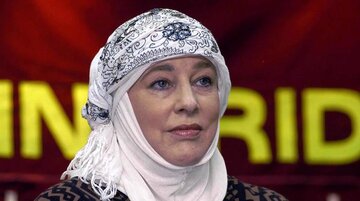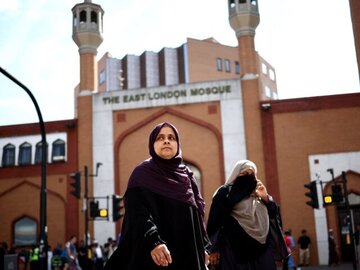AhlulBayt News Agency: Éléonore Cellard is a French scholar and expert on manuscript copies of the Quran.
In her opinion, the Arabic language and literature are linked to the text, concepts and history of the Quran, because the Holy Book and other literary works such as ancient poetry are the origin of eloquent Arabic language.
Cellard is a French scholar and expert on the manuscript of the Quran. She began studying Arabic language and literature under the supervision of Professor Francois Déroche before starting her own research in 2008.
Fascinated from the outset by the beauty of the Kufic style, she began her studies in Arabic language and literature in 2008 under the supervision of Professor François Déroche. Her thesis, defended in 2015, focused on the establishment of the Quranic text through manuscripts from the 2nd century AH (8th century).
Cellard then participated in the Franco-German projects Coranica and Paleocoran, publishing works on the Codex Amrensis, considered one of the oldest known Quranic manuscripts.
According to her, literary Arabic has its roots in the Quran and ancient poetry, hence the importance of linking the study of the sacred text with that of linguistics and calligraphy.
Her fieldwork in several Arab countries reinforced her conviction that the Quran has profoundly influenced local cultures. She believes that the science of manuscripts and calligraphy opens up new perspectives on the history of the transmission of the Quranic text and on the artisans who have preserved it through the centuries.
Cellard highlights the importance of ancient Eastern languages—particularly Arabic, Syriac, and Akkadian—in the study of the earliest written records of the Quran.
For her, the Quran represents the first literary and structured Arabic text, and understanding it requires examining the historical, material, and linguistic contexts of its production.
She asks fundamental questions: What writing practices existed in the Arabian Peninsula? Did other manuscripts precede the Quran? What scriptural influences contributed to its writing?
Her interest in Akkadian, one of the oldest Semitic languages, allows her to access a vast cuneiform documentation that sheds light on the region’s scriptural traditions. Syriac, a language of culture and transmission between civilizations, brings Quranic study closer to its immediate temporal context.
Cellard also challenges the idea that the Quran’s horizontal format was chosen to distinguish it from Christian works. According to her research, this choice responded to economic and practical considerations related to calligraphy and paper production. Thus, the material history of the Quran reflects a deep rooting in the cultural heritage of the ancient East.
Her book “The First Manuscript of the Quran” presents a detailed study of an ancient manuscript once preserved at the Amr ibn al-As Mosque in Cairo. Composed of four sections of approximately seventy-five pages, this manuscript contains Quranic text in Arabic accompanied by illustrations.
According to Cellard, although only 20% of the original text is preserved, she believes it was originally a complete mushaf, probably written by a professional scribe in the early eighth century.
Despite its small size, due to a horizontal layout designed to save paper, the manuscript presents an order of Surahs and verses faithful to the current canonical version, apart from a few errors common in handwritten texts.
Spelling errors, particularly in long letters (huruf ‘illa), reflect ancient graphic conventions. Cellard considers this copy to be one of the most accurate known to date. However, she emphasizes the need for a thorough comparative analysis of all manuscripts to better understand the criteria for writing the Quranic text.
Contemporary research on Quranic manuscripts, in which Cellard is involved, reveals the fundamental importance of the written transmission of the Quranic text from the second half of the 7th century. However, many questions remain unanswered: the exact dating of the manuscripts, their place of origin, the identity of the scribes, and the material conditions of their production.
One of the most impressive manuscripts, according to Cellard, is the one attributed to Caliph Othman ibn Affan, partially preserved in the Amr ibn al-As Mosque in Cairo. Probably dated to the 8th century, this monumental codex weighed approximately 50 kg and contained nearly 700 pages, each carved from the largest available hides. Fifty of these pages are now housed in the Bibliothèque nationale de France.
Cellard began her work on these fragments in 2012. Her participation in the Franco-German Paleocoran project (2015–2018) aimed to reconstruct the scattered fragments of the manuscript. Despite obstacles to accessing certain collections, she continues this project today, supported by the Ministry of the Interior.
For Cellard, passion and perseverance are the pillars of all research, even when results are slow to materialize.
/129






Your Comment